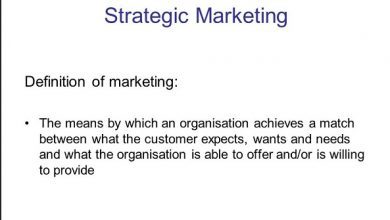What is Benchmarking/purpose/pillars/types/Mistakes/examples
What Is Benchmarking?
Benchmarking is a strategy that seeks to optimize the performance of a company based on the analysis of the best practices in the market in which it operates.
For this, the organization can compare itself to competitors and other prominent companies, using these cases and their tactics as a reference in management.
Basically, benchmarking consists of looking at the competition and understanding what these companies are doing to succeed, and then replicating the strategies that also make sense for your business.
It’s like having someone successful as a reference to make decisions about your career, for example.
In this case, the entrepreneur selects companies with similar characteristics that have achieved their goals and seeks to learn from their trajectory .
Usually, leading companies in the segment or strong competitors are used as a reference.
But it is clear that benchmarking is not a mere copy of the planning and management of others.
For the process to be efficient, it is necessary for the manager to identify which strategies of competitors really fit the reality of the business and adapt these practices to their context .
How Does Benchmarking Work?
In practice, benchmarking is an analysis that starts from the reality of companies that are a reference in their segment to define strategies to improve the performance of their business.
Therefore, it is common for the information collected and the results of the process to be organized in a document, which is called a benchmarking report.
To arrive at this document, it is necessary to use a methodology , which may involve market research, field research, analysis of studies, participation in events, mentoring, etc.
In other words, there are several ways of benchmarking, which vary according to the objectives of the analysis.
The important thing is that the process is conducted based on concrete data and with a clear view of the differences between your business and the companies used in the comparison.
What Is The Purpose Of Benchmarking?
The central objective of benchmarking is to improve the performance of a process, task, strategy or any other activity within the company, based on practices that have worked for competitors.
But the process also unfolds in other goals, for example:
- Map the main trends in your market segment and niche
- Understand the opportunities and threats of the sector, as in the SWOT Analysis
- Study successful cases of companies in the same segment as yours or that target the same target audience
- Get to know your own company’s processes and metrics better
- Engage employees in business goals, using as an example the success of companies that have applied similar strategies and have been successful
- Get to know your market better and the positioning of each competitor
- Promote management and planning learning based on the trajectory of other companies
- Make decisions about future investments , based on the reality of competitors and the market as a whole.
What Are The Pillars Of Benchmarking?
Benchmarking pillars help you focus on the right points when analyzing your competitors’ strategies and results.
Check each of them in detail:
1. Diagnosis
Diagnosis is a fundamental pillar in benchmarking because the analysis needs to start from the reality of the company that is using the strategy.
In other words: before looking for best practices in competitors, you need to know which processes and areas need improvement in your business.
It is based on these points that you will decide which companies to use as a reference and what kind of strategy to replicate.
After all, there’s no point in benchmarking without knowing which comparison metrics are useful for your company.
2. Research
Research is another key point in benchmarking, as basically you will have to look for information from multiple sources to build your benchmark.
This can be data that is already available, such as a market report that shows the performance of each player in a specific sector, or data produced by you based on exploratory studies, interviews, literature searches, etc.
3. Analysis
Obviously, benchmarking boils down to an in-depth analysis, that is, a comprehensive study of the practices of other companies that inspire their management.
Then, after collecting the necessary data, the next step is to use a method to compile this information and organize it so that you can arrive at an opinion.
This could be a simple document where you list your observations and describe comparisons (qualitative analysis) or a spreadsheet with calculations and comparisons between metrics (quantitative analysis), for example.
4. Interpretation
Interpretation is the moment when you look at the analysis performed in benchmarking and decide how this information can be useful for your business.
For example, if you’ve discovered that a competitor’s metric has a much higher result than your company’s, it’s time to analyze what strategies he used to reach that goal and study how they can be applied to your business.
Bearing in mind that it is useless to carry out a detailed benchmarking if the data are misinterpreted – hence the importance of a critical and strategic look at this stage.
5. Optimization
Finally, the pillar of benchmarking optimization concerns the application of practices observed in your business.
It is directly related to strategic planning, as it will be necessary to create an action plan to implement the desired changes according to the learning process.
What Types Of Benchmarking?
Benchmarking can be classified into a few types, according to its purpose and format.
See the main ones and the characteristics that differentiate them.
Performance Benchmarking
Performance benchmarking refers to the study carried out with a focus on analyzing the performance of competitors.
In this case, the main object of study is the KPIs (Key-Performance Indicators), which are metrics used to measure the most important business processes.
Some examples of KPIs are profitability, average ticket, Customer Acquisition Cost (CAC) and sales cycle length.
Internal Benchmarking
Internal benchmarking consists of choosing a specific process within your company and comparing its results with those that the competitor achieves in the same process.
For example, you can analyze the average response time of your competitor’s service in relation to yours, in order to identify areas for improvement.
Competitive Benchmarking
Competitive benchmarking is one in which a company studies the results of its competitors independently , without making a connection with the organization studied.
In this case, it adopts a competitive posture in the analysis, prioritizing the benefits that can be extracted from the process.
Cooperative Benchmarking
Cooperative benchmarking is one in which two (or more) organizations come together to share information in a process of mutual collaboration .
This type of benchmarking is very common in the startup innovation ecosystem, where creative entrepreneurs exchange ideas about strategic management and contribute with each other to leverage the growth of their businesses.
Within accelerators and incubators, for example, which are entities that support and offer structure to startups, the practice of cooperative benchmarking is part of the entrepreneurs’ routine.
Another example of this practice is when large companies form partnerships with startups to learn about technology and innovation from them.
Generic Benchmarking
Generic benchmarking is carried out with a standard methodology, which consists of analyzing people, processes and tools from other companies.
It is the most classic form of benchmarking, which analyzes processes in a qualitative way and looks for bottlenecks and points for improvement in the study.
Functional Benchmarking
Functional benchmarking is the study of a specific function performed in a model company, without, necessarily, that organization belonging to the same sector as yours.
For example, you can use Apple’s customer success strategy as a basis for improving this area of your business, even if your company has nothing to do with the technology market .
How To Do Benchmarking?
Now that you know the types of benchmarking and are more into this strategy, it’s time to learn the process in practice.
Check step by step:
1. Define Which Techniques Will Be Used For Analysis
The first step in doing your benchmarking is to define which methods and techniques you will use in the analysis of competitors.
The options are numerous, for example:
- Field research and interviews
- Online data search ( website, social networks, rich materials, studies published by the company, etc.)
- Use of market research, whitepapers, consulting reports and other data already available (free or paid)
- Analysis of website performance metrics (ex: study of internet positioning using tools such as Google Analytics or Google Search Console )
- Study of the company’s financial statements (DRE, balance sheet, etc.)
- Research the communication strategy and marketing campaigns of the business
- Quantitative analysis of KPIs (e.g. profitability, profitability, debt, etc.)
- Customer base and target audience analysis
- Participation in events promoted by the company, such as fairs, conferences, lectures, seminars, webinars, etc.
- Presence in mentoring with managers of the target business
- Participation in innovation hubs and associations that unite entrepreneurs in the same segment.
The ideal method and tool will depend on which processes you intend to improve with benchmarking from your initial diagnosis.
2. Research The Market And Identify The Main Competitors
It is important that benchmarking is done based on the company’s main competitors.
To know what they are, you need to study the market and find out what the positioning of each business is in relation to the target audience.
This is because in every segment there is a leader with the largest share and companies with different shares of the same audience.
For example, in the E RP systems market (Enterprise Resource Planning, or Integrated Business Management System), Totvs holds 35% of the segment , followed by SAP with (31%) and Oracle (15%), while other organizations appear with 5% or less ownership.
This is an example of the distribution of companies in a specific segment – and it is up to you to map who your competitors are and what your business’s position is in relation to them.
In most cases, it is worth using the market leader as a reference for your benchmarking.
But that doesn’t mean that you can’t base yourself on strategies that worked for competitors with less participation , as long as, in the criteria used, these companies have presented inspiring results.
3. Analyze The Information Collected
The analysis of the information collected is what determines the efficiency of your benchmarking.
Therefore, it is important to organize the results of the study in a document or spreadsheet and, preferably, prepare a presentation with a detailed diagnosis.
4. Look For Ways To Adapt
After analyzing your competitors, you will realize that the practices identified need to undergo an adaptation process to be applied in your company.
After all, what worked for one company will not necessarily work the same way in another organization.
Therefore, it is important that you take the learning of benchmarking and transform it into actions compatible with the reality of your business before taking any action.
5. Implement The Improvements
To implement the improvements identified in the benchmarking, you must create an action plan with the following basic structure:
- What: which process needs to be improved from the analyzed benchmark
- How: how the improvement will be implemented in the company
- When: what is the deadline for implementing the improvement
- Who: who will be responsible for applying the techniques identified in benchmarking
- Why: what is the justification for the efforts and resources used in the process
- How much does it cost: What investment will be required to implement benchmarking improvements.
Mistakes That Need To Be Avoided In Benchmarking
What if the strategy didn’t work?
In this case, it is necessary to be attentive to the causes of failure .
So, when doing your benchmarking, it is important to be aware of the following errors:
- Be careful not to choose a company or a process that is too far from the reality of your business
- Stay away from any kind of “industrial espionage”, disrespecting the secrecy and confidentiality of documents from other companies
- Avoid a very broad scope in benchmarking, as it is necessary to focus on the processes with the greatest impact on business performance
- Avoid centralizing the task in the hands of a single person, as it is necessary to involve several collaborators in the process to have access to different points of view
- Do not treat benchmarking as just another strategic report that risks being shelved . To avoid this problem, it is important to share the results with the team.
Benchmarking Examples
There are many examples of benchmarking in the market, ranging from studies carried out by large corporations to small business actions.
A classic example is the “Can it be Pepsi?” campaign. carried out by Pepsi, which started from an analysis of the competition that identified Coca-Cola as the absolute market leader.
With this realization, Pepsi used the competitor’s own leadership positioning to assert its position as “second choice” and, in this way, conquer a greater share of the market.
Another example of competitive benchmarking was the “Dinosauro” campaign , from the Mercado Pago digital wallet, which is based on the weaknesses of traditional banks to show the evolution that fintechs bring to consumers in relation to the quality of financial services.
In the delivery application sector, Rappi based on the launch of the iFood digital account to create its own digital account , with months of difference from the competitor.




